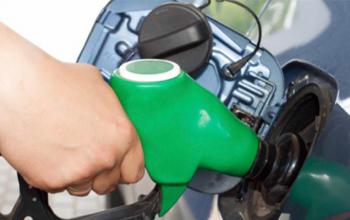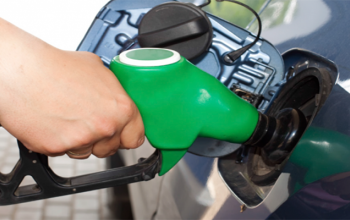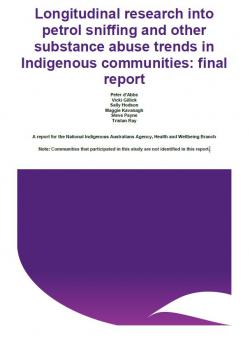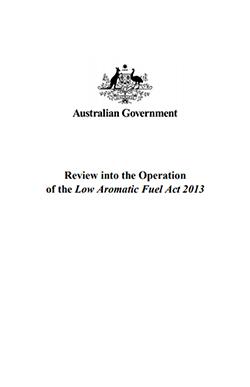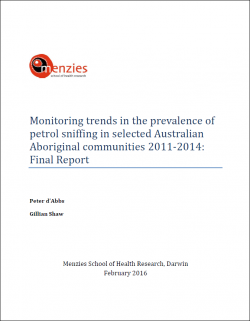The Second Statutory Review into the Operation of the Low Aromatic Fuel Act 2013 has been completed. You can access a copy of the report.
Petrol sniffing is a form of volatile substance use and can cause a number of serious health impacts, including brain damage or death. This can have a major effect in communities where petrol sniffing is a problem and on the families who live there.
Low aromatic fuel is an unleaded petrol that has been designed to discourage people from sniffing by lowering the amount of the toxic aromatic components, which can cause intoxication.
The Australian Government funds the extra costs of producing low aromatic fuel. This allows it to be sold at a similar price to regular unleaded petrol (91).
Fuel manufacturers, retailers, distributors and mechanics are key partners with the Australian Government in delivering low aromatic fuel to regional and remote communities.
There are around 190 retail sites across Queensland, the Northern Territory, Western Australia and South Australia that stock low aromatic fuel. The fuel has been available in many remote places since 2005.
The replacement of regular unleaded petrol (91) with low aromatic fuel in targeted regions is a proven strategy to reduce petrol sniffing. Research released by the University of Queensland in 2019 revealed a 95.2 per cent reduction in petrol sniffing in communities surveyed since 2005-07 that stock low aromatic fuel. The study also demonstrates:
- the long term benefits of continuing to make low aromatic fuel available,
- that the sharp drop in petrol sniffing numbers brought about by the introduction of low aromatic fuel has been sustained, with some communities even recording a further drop, and
- if low aromatic fuel were removed from communities, there would be a significant risk of petrol sniffing outbreaks returning.
Low aromatic fuel has a minimum octane rating of 91 and can be used any engine in which manufacturers recommend the use of regular unleaded petrol (91). This includes cars, boats and small engines such as lawn mowers, whipper snippers, generators, chainsaws, bikes and all-terrain vehicles. It can be mixed with the regular unleaded petrol (91) already in your engine.
The fuel has undergone independent testing to ensure it complies with the Australian fuel quality standards.
Low aromatic fuel has at some times in the past been referred to as ‘non-sniffable’ or ‘unsniffable’ fuel. This terminology is no longer used as low aromatic fuel, like all fuels, still contains dangerous chemicals. Low aromatic fuel is designed for use in engines and like all fuels it is dangerous if inhaled.
From 2022, low aromatic fuel has been dyed purple to make it easily identifiable. If a consumer finds copper coloured fuel in their tank, this may be a mix of low aromatic fuel with either regular unleaded petrol (91 octane) or premium unleaded petrol (95 or 98 octane). This may occur, for instance, when a fuel tank has been filled recently in both an area that stocks low aromatic fuel and an area that does not.
Further information on low aromatic fuel is available at:
- BP Australia's Opal fuel website or via phone: 1300 139 700;
- Shell Australia website or via phone: 131618.
Fact sheets are available for tourists, communities, and retailers.
Availability of low aromatic fuel
Consolidating or expanding the low aromatic fuel rollout
Factors that influence the availability of low aromatic fuel:
- Community Request – if a community or a fuel outlet feels there is a need for low aromatic fuel to be available in their area, they can approach the Agency for assistance, either emailing to LowAromaticFuel@niaa.gov.au or contacting one of our Regional Offices.
- Consultation – consultation with the broader community, fuel distributors and fuel retailers must take place before low aromatic fuel is introduced to a new area.
- Logistics – the storage and distribution of low aromatic fuel in a new area must be proven logistically viable and sustainable before it can replace regular unleaded petrol (91) in a new area.
- Legislative requirements – In some areas, the sale and supply of regular unleaded petrol (91) is prohibited by law, and low aromatic fuel is available in its place.
Areas where low aromatic fuel is widely available
- Arnhem Land
- Kakadu
- Katherine
- Tennant Creek
- Central Australia
- Goldfields
Areas where there is some availability of low aromatic fuel
- Gulf of Carpentaria
- Western Cape York
- Kimberley region
- Darwin (one station only) – Shell Coles Express Palmerston, 2 Yarrawonga Road (Cnr Roystonea Ave). In addition to low aromatic fuel, the Palmerston station also sells regular unleaded petrol (91) as well as premium unleaded petrol (95) and diesel. Low aromatic fuel is available at bowsers 5, 9, and 10 and is branded in green writing as Shell Unleaded 91 Low Aromatic.
- Having low aromatic fuel available in Darwin makes it easier for people travelling from Darwin to communities to fill up petrol cars, boats and any small motors (such as mowers, whipper snippers and generators) with low aromatic fuel at the start of the journey. This reduces the risk of regular unleaded petrol (91) getting into communities and potentially causing harm.
NIAA works with communities, fuel retailers, local health providers and other stakeholders to monitor areas where petrol sniffing emerges as a concern, and considers the rollout of low aromatic fuel in new areas where that will reduce harm.
Websites
For additional information on volatile substance use please visit:
- The Central Australian Youth Link-Up Service (CAYLUS) mission is to support community initiatives that improve quality of life and address substance use affecting young people in Central Australia. Find out more at www.caylus.org.au
- Youth Empowered Towards Independence (YETI) is a community based organisation that works with vulnerable young people. Find out more at www.yeti.net.au
For more information on volatile substance use responses at state or territory level, you can refer to the following webpages:
- Northern Territory Department of Health
- Government of Western Australia Mental Health Commission
- Dovetail, funded by the Queensland Government
Low Aromatic Fuel Act 2013
What does the Act do?
The Low Aromatic Fuel Act 2013 allows the Minister for Indigenous Australians to designate low aromatic fuel areas and/or fuel control areas where this will reduce potential harm to the health of people, including Aboriginal and Torres Strait Islander peoples.
In making this decision, the Minister must have regard to the views and wellbeing of Aboriginal and Torres Strait Islander people living in the area.
Read the Low Aromatic Fuel Act 2013.
Where have designations been made?
The provisions of the Act have been used to designate the following regions as ‘low aromatic fuel areas’:
- Palm Island, Queensland (since 27 November 2015);
- Barkly (Tennant Creek) region, Northern Territory (since 17 February 2016);
- Daly region, Northern Territory (since 19 February 2016); and
- Katherine region, Northern Territory (since 19 February 2016).
For more information on designated areas, view our fact sheets.







